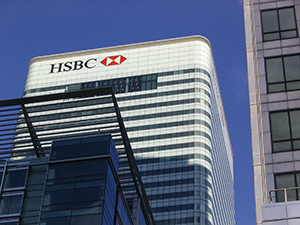AT1 restart tough, but HSBC revives sentiment
The AT1 market reopened only hesitantly after a difficult summer when the first new issue from the asset class, a Eu1.5bn deal from Santander, generated lukewarm demand and traded down in the aftermarket, although debut deals from HSBC and Nordea soon helped get the sector back on track.
Heading into the quiet summer period, the market had to contend with the fallout from the collapse of Banco Espírito Santo (BES).
The most immediate impact of the Portuguese bank’s woes came on 10 July when Banco Popular Español (BPE) had to pull an AT1 issue it was in the midst of launching.
The Lower Tier 2 market then bore the brunt of the fallout from BES when junior bondholders were bailed in as part of a rescue plan, being left with the rump bad bank, while senior creditors were transferred to a new entity, Novo Banco.
Persistent flare-ups in the Ukraine crisis, the ejection of AT1 from Bank of America Merrill Lynch indices, and concerns expressed by UK authorities about the sale of the instruments to certain investor classes all added to a difficult summer, with market participants saying that thin trading exacerbated volatility.
Santander was the then the first issuer to take the plunge into a post-summer AT1 market that was expected to be potentially less receptive to the instrument than the successes of the start of the year.
Those fears were more than realised when Santander’s perpetual non-call seven issue attracted Eu3bn of demand and, after pricing a Eu1.5bn issue, the deal performed disappointingly in the aftermarket.
“It’s fairly priced, but there’s no real premium,” said an investor, “and given that it is the first deal after the summer lull, I think every investor wanted a little bit of love to help bring some confidence back into the market.”
The order book compared with more than Eu15bn of demand for an inaugural AT1 in March — although that deal also hit the market at a difficult time and other investors noted that Santander was a tricky name.
UniCredit launched a Eu1bn perp non-call seven AT1 the following day, adopting a more pragmatic approach, being careful about pricing and sizing a modest transaction, and was rewarded with a better performance in spite of garnering a smaller order book than its Spanish peer.
“Investors at the moment do not like large deals because it just means that there are potentially more loose bonds, and it doesn’t take a lot of sellers to really move a price very much in a thin market,” said Waleed El Amir, head of strategic funding and portfolio at UniCredit. (See Q&A for full coverage).
Investment grade fervour
Echoes of the glory days of the market at the start of the year were ultimately provided by an inaugural and investment grade $5.6bn equivalent (Eu4.36bn, £3.43bn) AT1 for HSBC on 10 September.
Rated Baa3/BBB, the deal amassed more than $30bn of demand, some three-quarters of that for two US dollar tranches, and the balance for a Eu1.5bn euro piece. The larger, US dollar portion was split into $1.5bn of 5.625% perpetual non-call fives and $2.25bn of 6.325% perpetual non-call 10s, while the euro was a 5.25% perpetual non-call eight.
“HSBC was a sizeable landmark trade, one of the few AT1 transaction performing in the secondary market,” said Vincent Hoarau, head of FIG syndicate at Crédit Agricole CIB. “The euro and two US dollar tranches are trading above par in secondary since the break. The long-dated US dollar tranche is performing better in the secondary market due to the higher coupon, as investors search yield.
“The participation of Asian private banks has been extremely high given the footprint of the issuer in the region,” he added.
A $1.5bn dual tranche debut for Nordea the following week, on 16 September, underlined the greater appetite that inaugural issuers could uncover and tighter pricing they could achieve, with a $1bn perp non-call five tranche hitting a record coupon low of 5.5% (see separate article for full coverage).
In the meantime Crédit Agricole had the day after HSBC’s issue returned for $1.25bn with a 6.625% perp non-call five that attracted some $5bn of demand, taking the French bank’s AT1 issuance to some Eu3.8bn (see case study for full coverage).
In light of the mixed results of the post-summer supply and the impact of BES and BPE’s pre-summer reversal on potential second tier issuance, the outlook for the AT1 market was left more subdued than in the first half of the year, according to market participants, with the European Central Bank’s Asset Quality Review also to come.
However, the asset class’s underlying drivers remain in place and ultimate pipeline big, so further supply is awaited. Aareal Bank, for example, has already mandated banks for investor meetings ahead of a euro-denominated AT1 debut. The deal, with a 7% transitional CET1 trigger, is expected to be rated B+ by Fitch.

